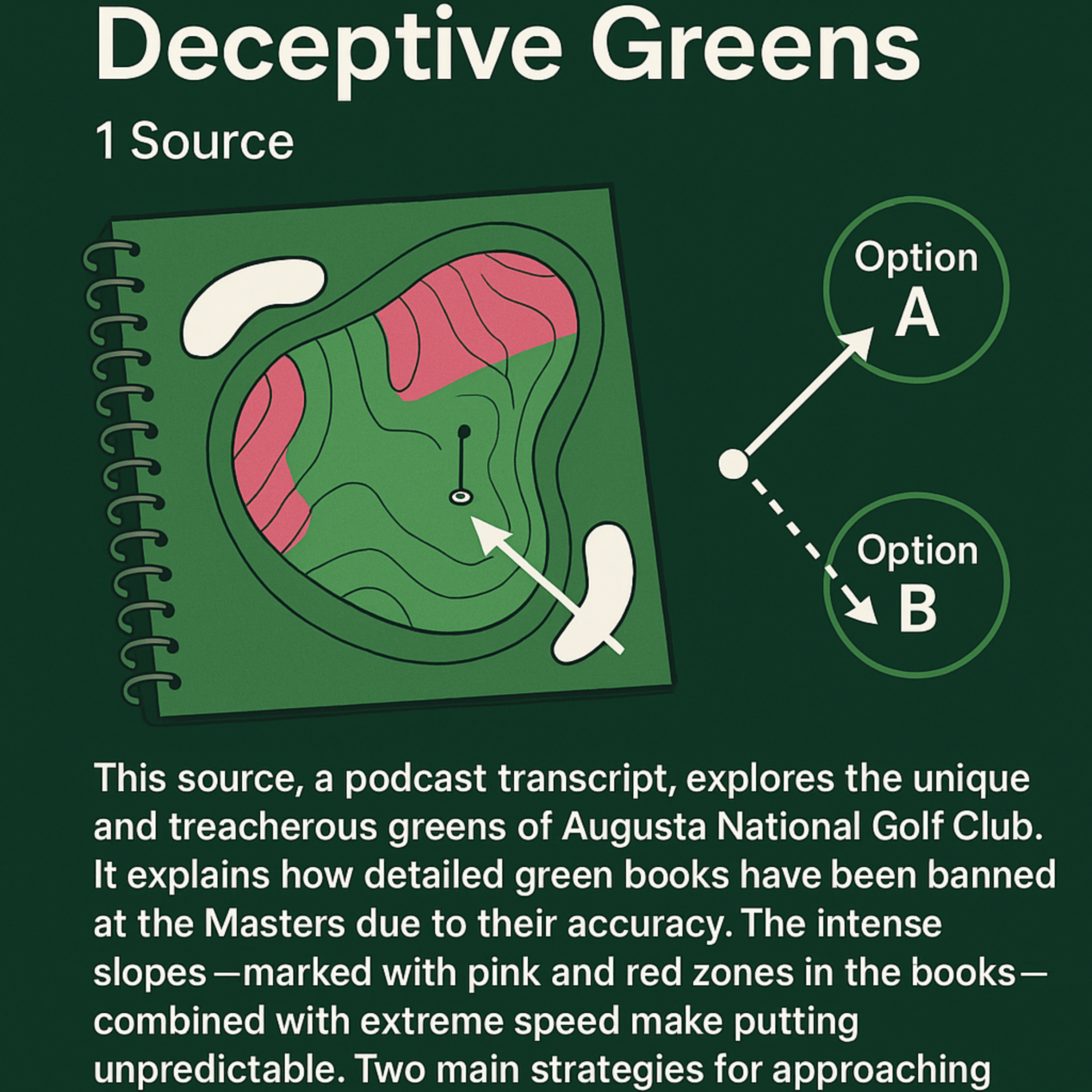#187 Augusta National's Ingenious and Deceptive Greens
- Author
- Golf247.eu
- Published
- Tue 08 Apr 2025
- Episode Link
- https://podcasters.spotify.com/pod/show/puttin-pro/episodes/187-Augusta-Nationals-Ingenious-and-Deceptive-Greens-e30vhvf
This podcast explores the unique and treacherous greens of Augusta National Golf Club. It explains how detailed green books have been banned at the Masters due to their accuracy. The podcast reveals that the intense slopes of the greens—marked with pink and red zones in the books—combined with their extreme speed, make putting unpredictable. Two main strategies for approaching the greens are discussed: aiming directly for flat zones (Option A), or using the slopes to guide the ball to the hole (Option B). These options highlight the course’s strategic depth and explain why repeated success at the Masters is so rare. Augusta National's unique and deceptive greens give experienced players a distinct advantage, as understanding their characteristics requires years of knowledge and familiarity.
Here are the main reasons why experienced players have an edge on Augusta National’s greens:
Knowledge of subtle and extreme slopes:The greens at Augusta are highly undulated, with slopes so strong that balls struggle to stop—especially when combined with the slick speed of the putting surfaces. Veteran players have spent years learning to read and anticipate these often deceptive contours.
Understanding of “effective green area”:Due to the speed and slope, the greens play much smaller than their actual size. The “effective green area” refers to the spots where the ball can actually stop. Experienced players are better at identifying these playable zones based on the day’s pin placement.
Mastery of strategic decisions (Option A & B):Augusta National forces players to make a binary decision on nearly every approach shot:
Option A: Aim directly at a small, flat landing zone to avoid being punished by the slope.
Option B: Use the slope to feed the ball toward a flatter area or the hole.
Skilled players know when to use each option depending on pin position and green contours.
Experience with green speeds:Augusta’s greens are extremely fast. While the Stimpmeter reading in the 1970s was around 8, today it’s likely closer to 15 or 16. Seasoned players are better adapted to these speeds and know how firmly to hit uphill and downhill putts. A podcast guest noted that even uphill putts were surprisingly tricky, often coming up short unless hit with conviction.
Knowledge of pin positions:Ideal approach zones shift drastically based on daily pin locations. With years of familiarity, experienced players understand the patterns and tendencies of pin placements and know which areas to avoid—or use to their advantage—on any given day.
Punishment for mistakes:Unlike other courses where missed shots might still result in manageable lies, Augusta harshly punishes certain errors. Skilled players are acutely aware of these high-risk zones and avoid them at all costs. For example, Scottie Scheffler experienced this during the final round of his first Masters win: a seemingly solid shot that landed 30 feet left of the pin rolled 70 feet away due to the slope.
These combined factors explain why it can take years to truly understand the nuances of Augusta’s greens. It also helps clarify why only one rookie has won the Masters since 1935—and why the same experienced players tend to perform well year after year. The course keeps its secrets, and the greens can deceive even the sharpest eye. For less experienced players, it's helpful not just to aim for the middle of the green, but to consider the playable zones and how the slopes will affect the ball.
